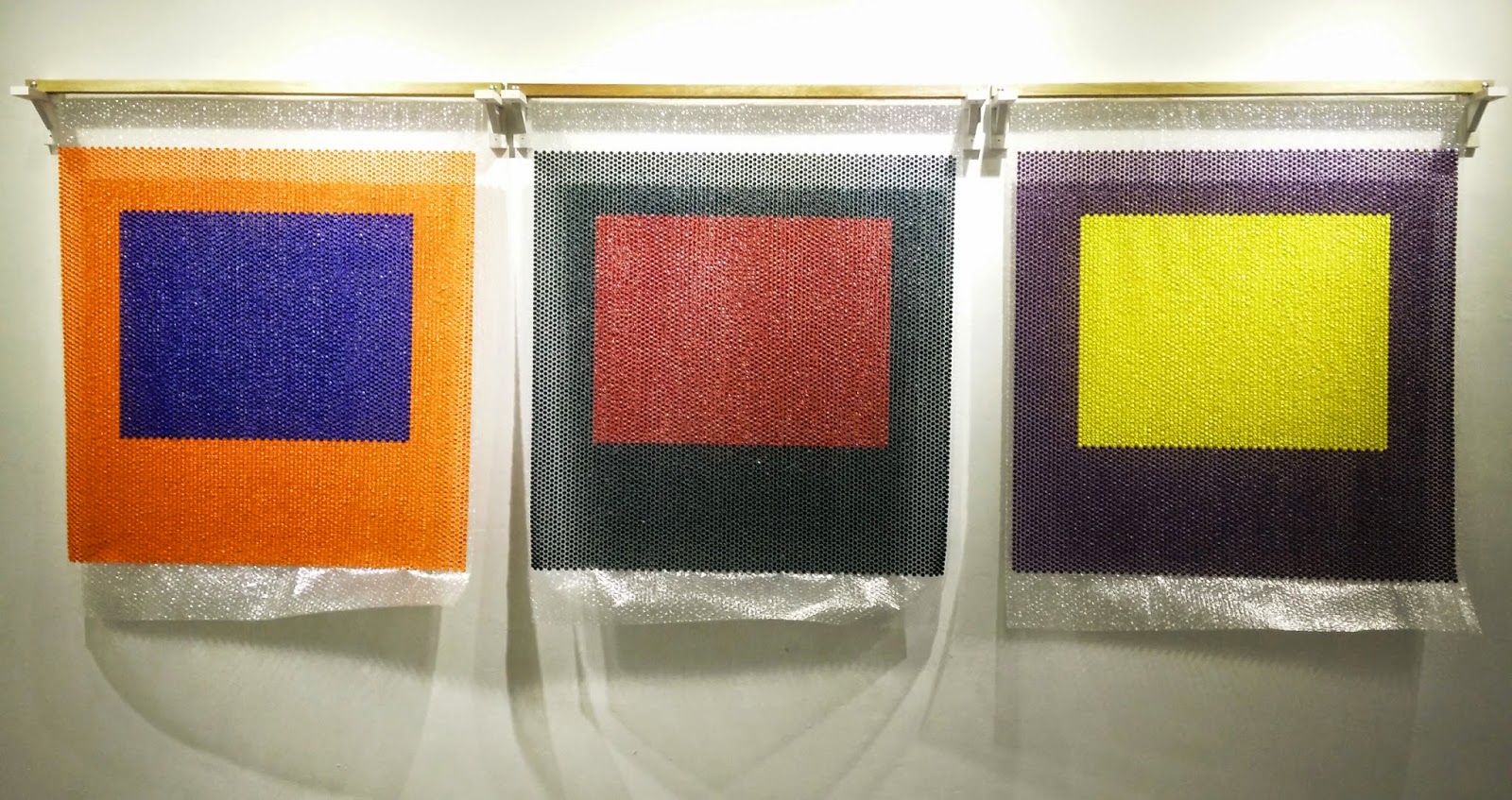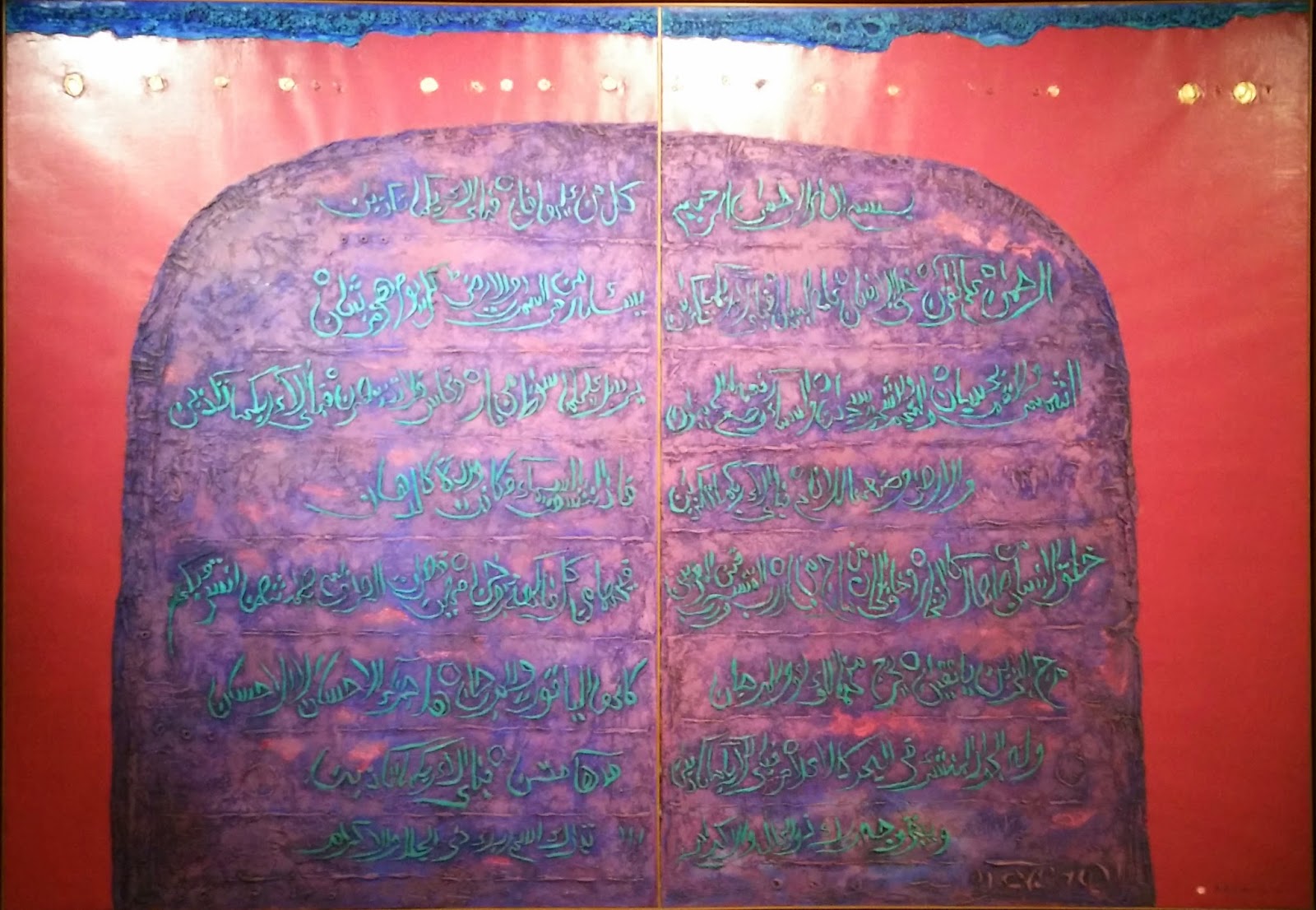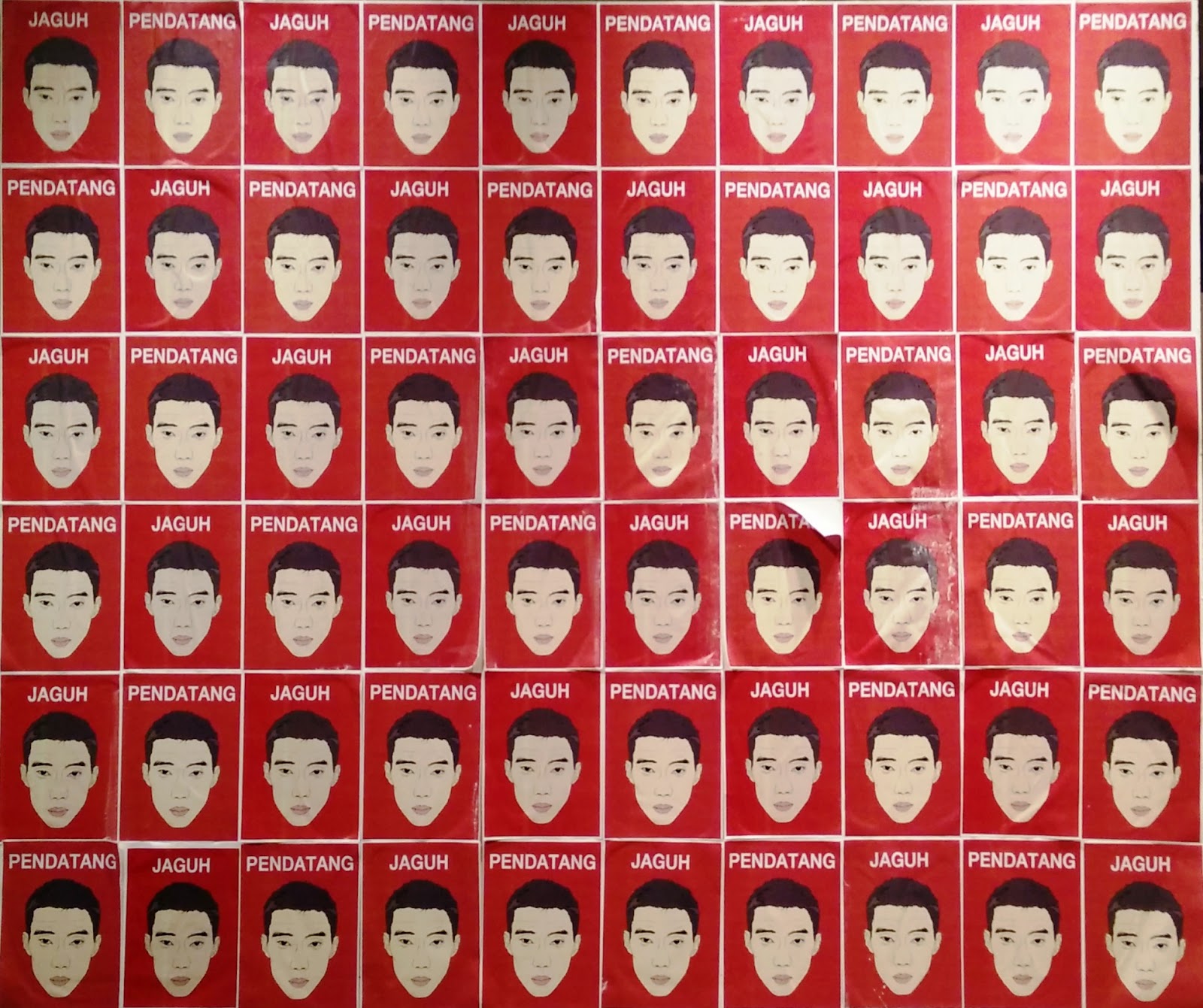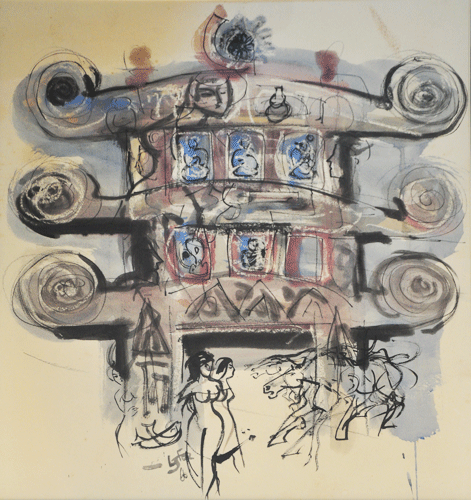Following in the tradition of my favourite non-authoritative end of year awards, the 2014 visual art events in Kuala Lumpur that tickled my fancy are…
Favourite solo (new) exhibition: The Pleasures of Odds and Ends; Gan Siong King's show of paintings triggered a ridiculous amount of thoughts about images, and will be remembered as good art despite a negative assessment. Azliza Ayob’s surreal collages were decorative, fun, and showed significant artistic growth for one committed artist.
Favourite programming: Goethe Institut’s visual arts events; Furniture and photography exhibitions at Galeri Petronas, and the wonderful drawings at Galeri Serdang, prove refreshing with its creative interpretations of common mediums. Walking in the surroundings of Petaling Street at daybreak with Susanne Bosch remains a vivid memory, and so are the performances and newspaper cut-outs exhibited towards the end of the German artist’s residency at Lostgens'.
 |
| Phuan Thai Meng - Game (study) (2003) [picture taken from TM's Painting Lab web log] |
Favourite solo (not-so-new) exhibition: 12 Years of Visual Disobedience; Political posters by Fahmi Redza show how graphic design can be an effective tool for social activism. Outside of KL, one IsmailHashimsurvey revealed the strong hand and masterful presentation of its curator. Its producer Fergana Art figures to be a upcoming disruptive force in the local visual arts scene.
Favourite group (new) exhibition: A tie between The Good Malaysian Woman and 刻舟求剑 - Pulau Melayu - Lost and Found. The former displayed superb artworks that covered many mediums, and coincided with a significant life milestone. Vivid images of a giant paper boat rotting on the rooftop, tarpaulins layered with paints, and colourful nonsensical characters, mark the latter as a successful outing for a self-organised artists' exhibition. Minstrel Kuik’s sublime photographs and her impeccable use of space in both exhibitions, strike one as the most memorable art seen this year.
| Minstrel Kuik - The Prisoner's Landscape - after Pudu Jail (2014) |
Favourite group (not-so-new) exhibition:The Fine Artof Fabrics; Beautiful printed works by Fatimah Chik and Sivam Selvaratnam were presented alongside Syed Ahmad Jamal, whose textiles are more impressive than his painting output. Among two Malaysian sculpture-collector exhibitions, Jumping Jack Flash left a better impression due to its less obvious intent to downplay the role of the public institution. These three shows were an invaluable resource in understanding Malaysian visual art beyond paintings.
Favourite use of exhibition space:505·祭墨; Taoist charms hanging among antique furniture at Petaling Street Art House befitted the wishful content of its calligraphic verses. Crunching on Styrofoam boxes while ascending the steps of Chin Thye Hin was memorable, as young artists utilised the sun-drenched space for a pleasant viewing experience.
| Hasnul J Saidon - Siri Hijab Nurbaya - Tanggung (2003) |
Favourite Something New: Yau Sir Meng’s education-themed installations blew me away with the maturity in expression, while the subversive works of Engku Iman were thoroughly enjoyable.
Least favourite trend: Paintings that isolate figures on a nondescript or nostalgic background, subscribe to market forces that impede further local appreciation for more progressive art-making. Photography is a superior medium for such modes of portraiture, and artists need to expand their horizons beyond portraying simple dichotomies.
Favourite art writing: Ong Jo-Lene’s essay that accompanied Language of the Jungle was necessary to dispel my dismissal of exotic images painted by Tan Wei Kheng. The email exchange between Jun Kit and Tan Zi Hao for Gangguan provided a glimpse into the artists' minds, which proved useful in appreciating the exhibited artworks better.
| Installation view of Yau Sir Meng - Melting (2013) [exhibited at Under Construction] |



.jpg)
.jpg)
.jpg)
.jpg)
.jpg)







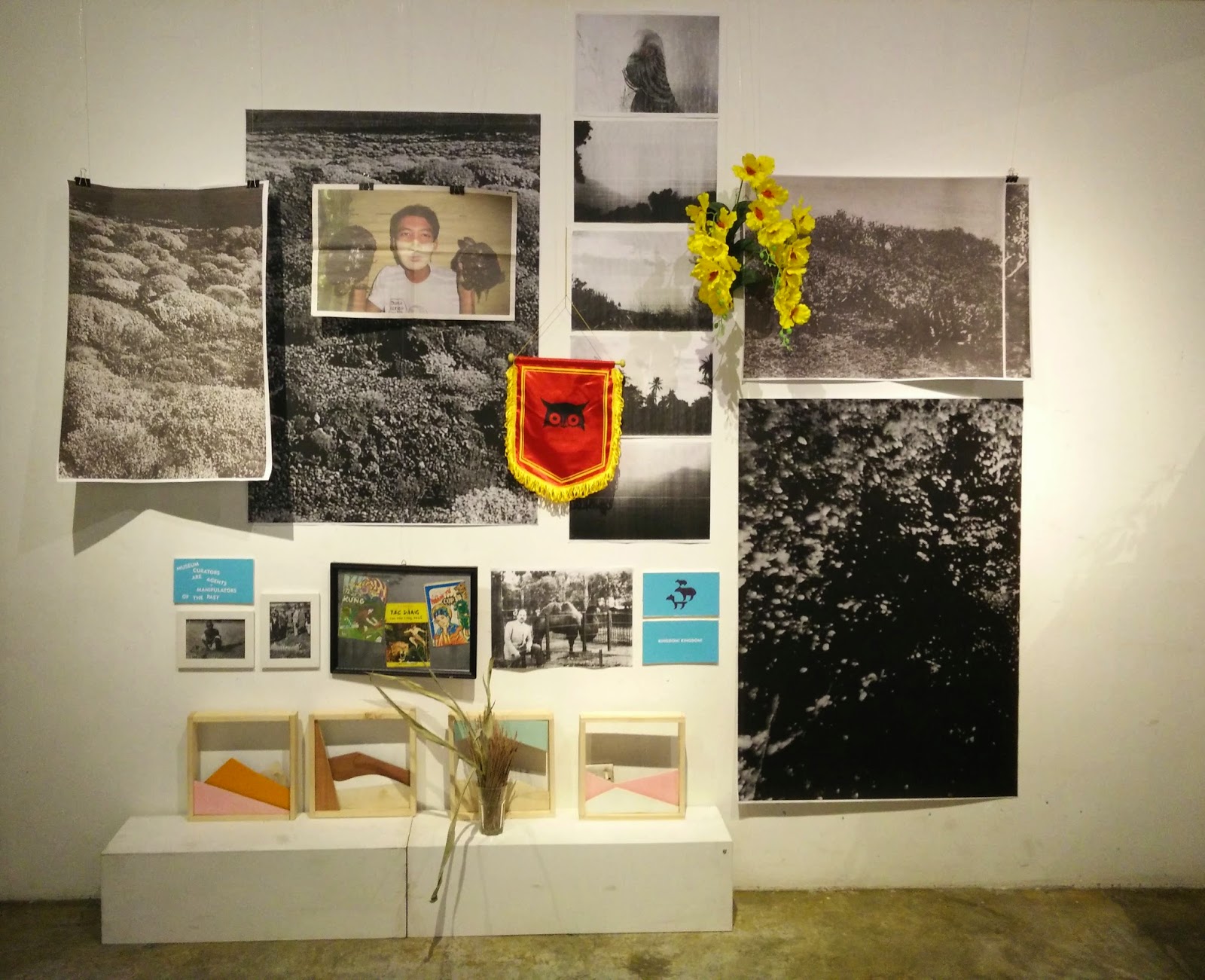







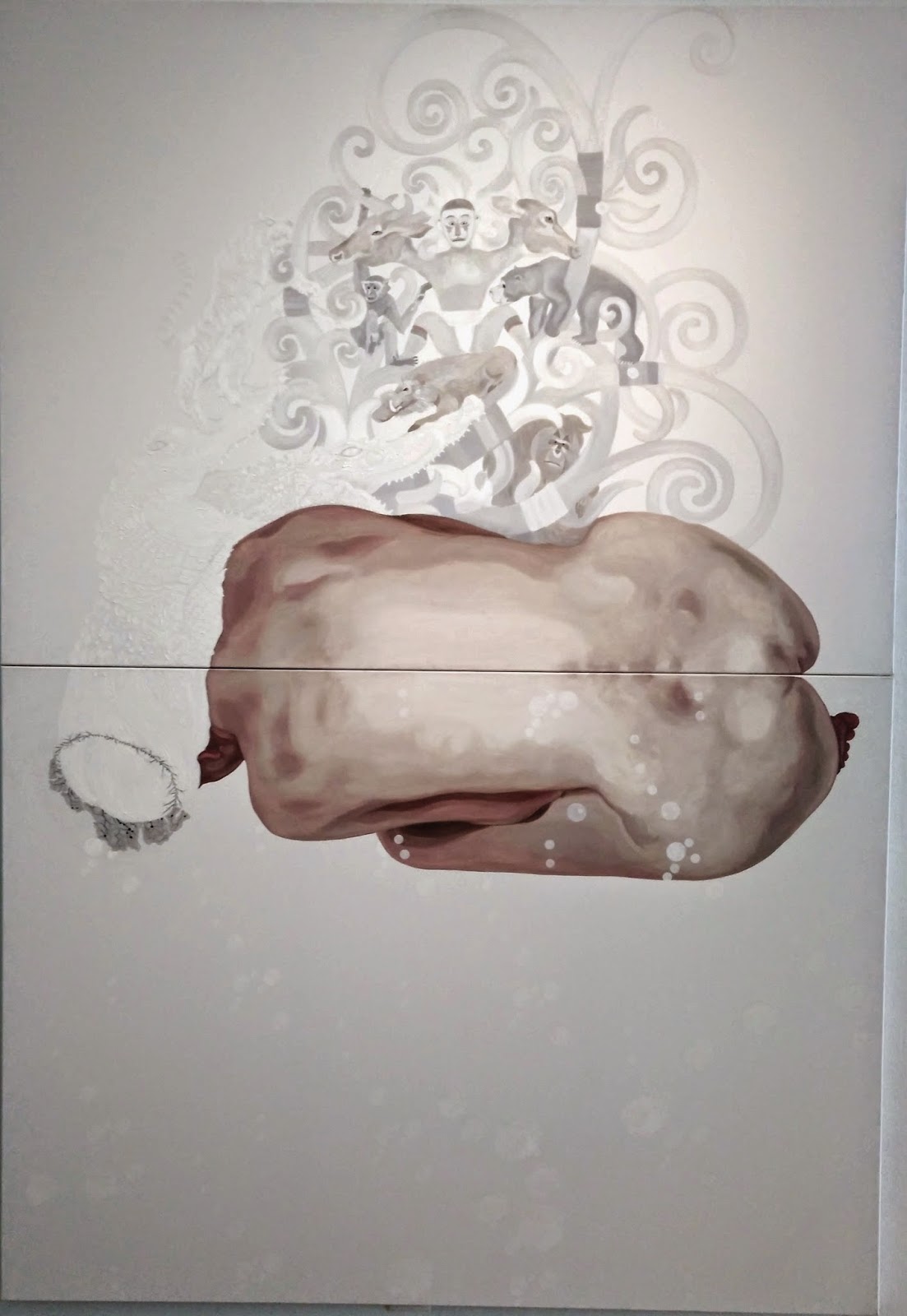

.bmp)








